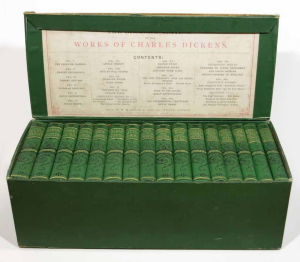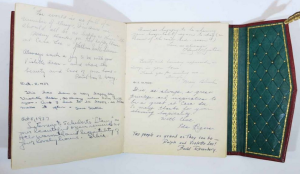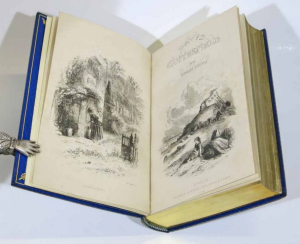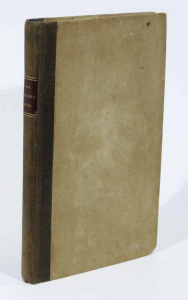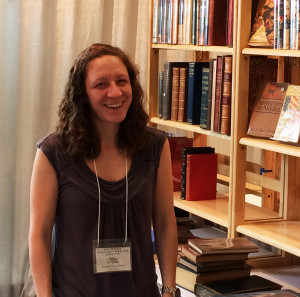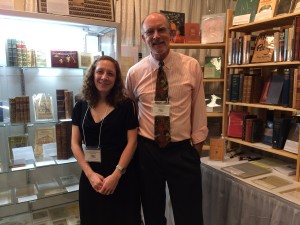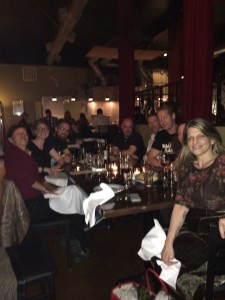By Margueritte Peterson
When I first became interested in rare books I took myself to as many antiquarian book fairs as I could. My first fair was in London, where I sheepishly wandered around as silently and as invisibly as possible and tried to pretend that I belonged in the same room as a million dollar manuscript of Alice in Wonderland by Charles Dodgson. I left the fair and called everyone I knew (so, basically, the five people on my speed-dial list) to tell them what I’d seen. They were all flabbergasted and amazed that I had seen an original, marked-up copy of the famous children’s story. But even I had to ask myself the question that everyone asked me (apparently they knew no one else in the business)… why a million dollars? Why? This is a question I’d like to briefly handle, in my own words, by discussing the main components of what gives books value (a question that is answered in-depth by our very own Vic Zoschak during his seminars at select California ABAA fairs… which you should all attend).
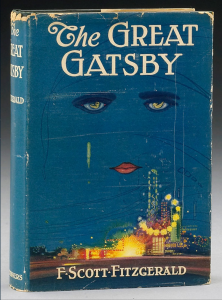 Edition. We all know that a 1991 paperback copy of F. Scott Fitzgerald’s The Great Gatsby sells for about $1.50 on Ebay to ten thousand US high schoolers every year. Why then are there copies of the same book selling for over $100,000 online? Those are first editions. We at Tavistock Books consider first editions as first printings of the first edition. The true first time the book was ever printed. Now, these copies are not only selling for so much because they are first editions. After all, sometimes you can find a much sought after first edition, first printing at a local used bookstore for the bargain price of $10! This point leads us to the next deciding factor, which is…
Edition. We all know that a 1991 paperback copy of F. Scott Fitzgerald’s The Great Gatsby sells for about $1.50 on Ebay to ten thousand US high schoolers every year. Why then are there copies of the same book selling for over $100,000 online? Those are first editions. We at Tavistock Books consider first editions as first printings of the first edition. The true first time the book was ever printed. Now, these copies are not only selling for so much because they are first editions. After all, sometimes you can find a much sought after first edition, first printing at a local used bookstore for the bargain price of $10! This point leads us to the next deciding factor, which is…
Condition. Condition of titles are essential to the demand for a certain book. The $10 bookstore copy of Gatsby is tattered, smelling of cigarette smoke, foxed throughout (foxing being the term for those brown spots that come up on book pages – a curious phenomenon between the ink, paper and chemical reactions), and with crayola markings where a desperate mother pushed her book into her sons hands for a moment of peace on the telephone. Condition, akin to location in real-estate, is of great importance in giving value to rare books – as it is very hard to sell a book that is in desperate need of a make-over unless it has a wonderful quality I like to call…
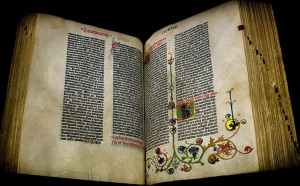 Rarity. Every bookseller has heard this phrase a thousand times from clients wishing to sell us books… “but it’s really old…” Yes, you may have a book from 1913 with a lovely gilt illustrated binding. But a quick search online shows hundreds of copies exactly the same, none fetching more than $30! Now, you think you may have an intact (or even not intact… for this example that doesn’t really matter) Gutenberg Bible sitting on the shelf in your grandma’s garage? The phrase should be “Now that’s a horse of a different color!” Only 48 known copies of the earliest moveable-type printed book are known to man, only 31 of which are perfect (complete). That type of rarity is far different than so many online and probably double that amount still sitting in your grandma’s garage. (I’m sure she’s a lovely lady but what she got doesn’t interest me and that leads us to my last point which is…)
Rarity. Every bookseller has heard this phrase a thousand times from clients wishing to sell us books… “but it’s really old…” Yes, you may have a book from 1913 with a lovely gilt illustrated binding. But a quick search online shows hundreds of copies exactly the same, none fetching more than $30! Now, you think you may have an intact (or even not intact… for this example that doesn’t really matter) Gutenberg Bible sitting on the shelf in your grandma’s garage? The phrase should be “Now that’s a horse of a different color!” Only 48 known copies of the earliest moveable-type printed book are known to man, only 31 of which are perfect (complete). That type of rarity is far different than so many online and probably double that amount still sitting in your grandma’s garage. (I’m sure she’s a lovely lady but what she got doesn’t interest me and that leads us to my last point which is…)
Desire. Another instance of disappointment to clients wishing to sell booksellers their items is when they realize that even we couldn’t sell the book – meaning that booksellers try not to buy books when there are no customers for the title. You may have an interesting archive (from your grandfather’s family, which your grandmother gave you after he passed away) of family pictures from 1875. But a bookseller can only justify using his company’s funds to buy said archive if there is a desire for such a collection! Does he have a customer that would be interested? Does he know where he can find someone who fits the bill? If the answer to these questions are both “no”, then we won’t take the archive off your hands… no matter how cute your great grandmother was in her wedding dress.
I tried to keep this blog short and sweet – a basic overview to our customers and other bibliophiles out there – as to what it is that antiquarian booksellers do and how they are able to figure out the pricing that they do. An essential part of the job is having an amazing research ability, not to mention the knowledge of the trade that comes from years of experience. Is there a National Antiquarian Bookseller month? Perhaps November would be a good time to give thanks for your local booksellers!
P.S. If learning more tricks of the trade is interesting to you, look into taking one of the courses Vic Zoschak leads – an annual reference book workshop giving you the basics of how booksellers begin their research, or the Book Collecting 101 workshop mentioned earlier and offered at Bay Area ABAA book fairs! You won’t be sorry…


